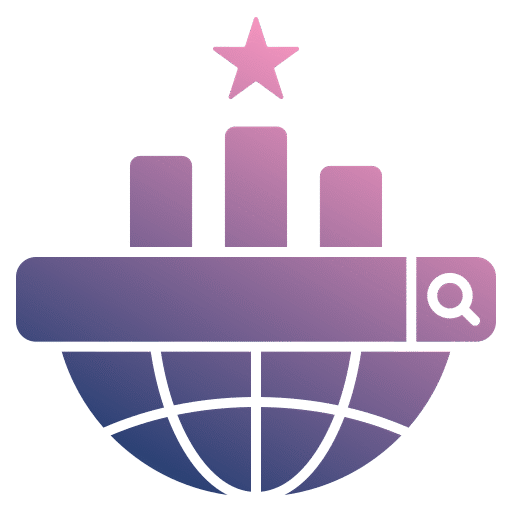The healthcare industry is undergoing one of the most profound changes in decades, driven by digital innovation. Remote Patient Monitoring (RPM) applications are at the forefront of this transformation, enabling hospitals, clinics, and care providers to deliver continuous care beyond traditional medical settings. According to a 2024 survey by Insider Intelligence, nearly 30 million patients in the U.S. are expected to use RPM tools by 2025, highlighting the role these apps now play in modern healthcare ecosystems.
Understanding Remote Patient Monitoring (RPM)
RPM refers to the use of connected devices, sensors, and mobile applications to collect patient health data in real time. This data—ranging from blood pressure and glucose levels to oxygen saturation and heart rate—is transmitted securely to healthcare providers for ongoing evaluation.
Unlike occasional check-ups, RPM creates a continuous loop of data exchange, ensuring patients are monitored daily and providers are alerted to irregularities instantly. This approach reduces the reliance on hospital visits while fostering proactive care.
Why Continuous Care Matters in Healthcare
Continuous care bridges the gap between episodic visits and real-world patient needs. It ensures that care doesn’t end when patients leave the hospital. Instead, providers maintain visibility into their health status and intervene early when issues arise.
For patients with chronic conditions—such as diabetes, hypertension, or heart disease—this model offers stability, improved quality of life, and fewer emergency events. For healthcare systems, it reduces costs by preventing unnecessary hospitalizations and optimizing resource allocation.
Key Features of RPM Applications
RPM apps are not just data collectors; they are sophisticated platforms that connect patients, providers, and caregivers seamlessly. Below are some defining features:
Real-Time Data Transmission
RPM apps integrate with wearables and IoT devices to capture live health metrics, providing immediate visibility into patient conditions.
Alerts and Notifications
Automated alerts notify both patients and providers when data points deviate from safe ranges, enabling timely action.
Patient Engagement Tools
Through reminders, chat features, and personalized health tips, RPM apps encourage patients to stay engaged in their own care.
Integration with EHR Systems
Seamless integration with electronic health records ensures that the data collected is incorporated into patient history, giving providers a complete view of patient health.
Secure Communication Channels
Encrypted messaging and video consultations allow providers to connect with patients directly, ensuring confidentiality while offering convenience.
Analytics and Predictive Insights
Advanced RPM platforms use AI to detect trends in data, predicting potential health risks before they become critical.
How RPM Apps Transform the Role of Healthcare Providers
Healthcare providers are no longer limited to clinical visits. With RPM apps, they gain a proactive role in managing care.
Early Detection of Health Risks
Constant monitoring helps detect anomalies like irregular heart rhythms or sudden drops in oxygen, enabling rapid intervention.
Enhanced Patient-Provider Communication
Providers can interact with patients virtually, creating stronger relationships without requiring in-person visits.
Reduced Clinical Burden
By automating routine monitoring, RPM apps free up provider time, allowing them to focus on patients requiring immediate care.
Scalable Care Delivery
Providers can manage larger patient populations with fewer resources, ensuring quality care even in underserved areas.
Personalized Care Pathways
Data-driven insights allow for customized treatment plans tailored to each patient’s lifestyle, medical history, and condition.
Improved Outcomes Reporting
RPM apps generate reports that demonstrate improved patient outcomes, helping providers secure reimbursements and comply with regulations.
How RPM Enhances the Patient Experience
Patients benefit from RPM in multiple ways, making it more than just a medical tool.
Convenience of At-Home Care
Patients no longer need to make frequent trips to clinics. Monitoring devices and apps allow them to track their health from the comfort of home.
Better Adherence to Treatment
Regular reminders and real-time feedback encourage patients to follow their prescribed treatment plans.
Reduced Anxiety and Improved Confidence
Patients feel reassured knowing their health is being tracked continuously, easing anxiety over chronic conditions.
Empowerment Through Data
Access to health metrics empowers patients to take responsibility for their lifestyle and choices.
Improved Health Literacy
RPM apps often include educational tools that help patients understand their condition and manage it effectively.
Family and Caregiver Involvement
Data can be shared with family members, enabling them to actively participate in patient care.
The Role of Technology in RPM Applications
Technological advancements have fueled the adoption of RPM applications, making them more reliable and accessible.
Cloud Computing
Data collected from patients is securely stored and accessed via cloud platforms, ensuring scalability and availability.
IoT Integration
Smart devices like glucose monitors, smartwatches, and connected inhalers enable real-time health tracking.
Artificial Intelligence and Predictive Analytics
AI algorithms detect early warning signs, making predictions about potential complications.
Mobile App Innovation
Mobile applications have become the hub of RPM systems, offering intuitive interfaces for patients and providers alike. Many healthcare startups are even collaborating with firms specializing in mobile app development Atlanta to design scalable, user-friendly solutions that improve accessibility.
Cybersecurity Measures
Strong encryption and compliance with HIPAA regulations safeguard sensitive patient data.
Interoperability Standards
Technologies now emphasize interoperability, ensuring that RPM apps work seamlessly with existing hospital systems.
Business Benefits of RPM Adoption
Beyond clinical improvements, RPM brings strategic benefits to healthcare organizations.
Cost Reduction
By preventing unnecessary hospital visits and readmissions, RPM reduces operational expenses.
Better Resource Utilization
Staff can allocate time more efficiently, focusing on patients who truly need intervention.
Competitive Advantage
Hospitals adopting RPM technology position themselves as innovative leaders in patient care.
Expanded Reach
Providers can extend services to remote and rural areas without requiring additional infrastructure.
Regulatory Compliance and Reimbursements
RPM aligns with evolving healthcare regulations and qualifies providers for reimbursement under many insurance policies.
Long-Term Scalability
RPM systems can evolve with patient needs, supporting larger populations and expanding features over time.
Challenges in Implementing RPM Apps
While RPM holds immense promise, its adoption is not without challenges.
Data Privacy Concerns
Protecting sensitive patient information remains a top priority for developers and providers.
Technology Access Gaps
Patients in rural or low-income areas may lack access to smartphones, devices, or reliable internet connections.
Provider Training Requirements
Healthcare staff need proper training to interpret RPM data effectively.
Device Reliability Issues
Inaccurate readings from low-quality devices can compromise the integrity of monitoring systems.
Integration Complexity
Seamless interoperability with existing EHR systems often requires significant technical expertise.
Patient Resistance
Some patients may be reluctant to adopt new technologies due to lack of familiarity or perceived complexity.
Future of RPM in Continuous Patient Care
The future of RPM apps looks promising, with innovation driving even more transformative features.
AI-Powered Predictive Care: Algorithms will move beyond alerts to deliver actionable, personalized care recommendations.
Wearable Evolution: Devices will become less intrusive while offering more advanced monitoring.
Global Expansion: Emerging markets will increasingly adopt RPM to bridge healthcare access gaps.
5G and Edge Computing: Faster networks will enable real-time analysis without delays.
Holistic Health Integration: Apps will track not just vitals but also lifestyle factors like sleep, nutrition, and activity.
Patient-Centric Ecosystems: The focus will shift to empowering patients with more control over their care journey.
Conclusion
Remote Patient Monitoring apps are transforming continuous patient care by creating a seamless bridge between patients and providers. They empower individuals, optimize provider efficiency, and reduce healthcare costs. As technology evolves, RPM is poised to become the standard model of care delivery across the globe, fostering a more proactive, personalized, and sustainable healthcare system.
FAQs
1. What is Remote Patient Monitoring (RPM)?
RPM is the use of connected devices and applications to track patient health data outside traditional clinical settings, enabling continuous care.
2. How do RPM apps improve patient outcomes?
By providing real-time data and early alerts, RPM apps enable timely interventions, reduce hospitalizations, and support better adherence to treatments.
3. Are RPM apps secure for patient data?
Yes. Most RPM systems comply with HIPAA and use advanced encryption to protect sensitive health information.
4. Can RPM apps integrate with existing healthcare systems?
Modern RPM platforms are designed for interoperability, ensuring seamless integration with EHRs and hospital management systems.
5. Who benefits most from RPM applications?
Patients with chronic conditions, elderly individuals, and those requiring post-surgical monitoring benefit significantly from RPM.
6. What challenges limit RPM adoption today?
Challenges include data privacy concerns, device reliability, access gaps in rural areas, and the need for provider training.



